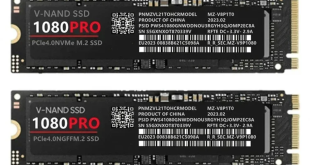It doesn't matter how good any of the synthetic suites are, the real meat of the testing has to be under absolute real world conditions. This proves difficult as to record results we have to narrow down fluctuation. Therefore while we would say these are the most useful results to get from this review, there is always going to be a slight margin for error – its not absolutely scientific.
Firstly we installed a fresh copy of Windows 7 Ultimate 64bit Edition onto each of the drives, no programs were installed, just the operating system and a clean update from Microsoft with all patches and security fixes. The machine was then shut down and once started up we recorded boot times – until we reached a working desktop. We used a digital watch for this and repeated the test five times for each drive – once we had these five results we averaged the results and took that for the final figure. We also included a standard £70 Western Digital 1TB hard drive for comparison purposes.
Basically we can work out that by adding any of the SSD drives on test today we can reduce our Windows boot time by half. The Kingston drive is top of the pile, just behind the Intel X drive which leads by a considerable margin.
Snow Leopard 10.6.3. Boot Times
Not everyone uses Windows 7, and although TRIM is only supported by this Operating system, I like to expand results a little when possible. I therefore used my Macintosh MacBook pro 17 inch, Generation 5.1 which is based around a 2.93ghz Core 2 Duo processor with 9600m graphics. There is 8GB of DDR3 ram in this machine with a full 3 Gigabit link speed over the nVidia MCP79 AHCI. I also enabled the full 64bit Kernel and Extensions – if you want to read more, check out this article.
Removing the mechanical drive in this system gave massive real world benefits. Even though the system booted up faster with an SSD, everything was much more responsive.
As we expected, the Intel drive came out top with the Kingston drive in second place with a 4 second deficit. The Corsair and OCZ drives followed a mere second behind. The mechanical drive was nowhere in sight and we found that we could be actually working in Photoshop CS5 with an SSD by the time the Macintosh was just booting into the OS with the 7,200 rpm unit.
If you need a good reason to upgrade to an SSD, we think this is it.
 KitGuru KitGuru.net – Tech News | Hardware News | Hardware Reviews | IOS | Mobile | Gaming | Graphics Cards
KitGuru KitGuru.net – Tech News | Hardware News | Hardware Reviews | IOS | Mobile | Gaming | Graphics Cards




